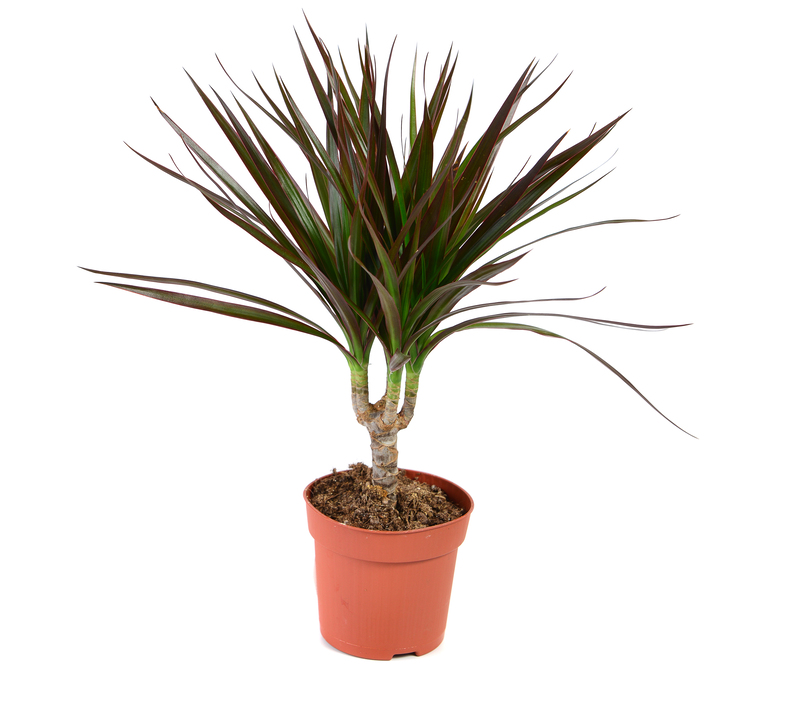Giving Waste a Second Life as Nutrient-Packed Soil
Posted on 07/09/2025
Giving Waste a Second Life as Nutrient-Packed Soil: Transforming Trash into Treasure
Have you ever wondered what happens to your banana peels, coffee grounds, eggshells, and yard trimmings? For many households and businesses, these items simply fill up garbage bins and, ultimately, landfills. But there's a more sustainable, environmentally friendly solution--a way to give waste a second life as nutrient-packed soil.
This practice doesn't just divert waste from overflowing dumps, it creates a resource crucial for healthy gardens, farms, and green spaces. Read on to discover how transforming organic waste into enriched soil can benefit the planet, your plants, and your wallet!

The Journey from Waste to Nutrient-Rich Soil
Organic waste is a potential goldmine for gardeners, farmers, and anyone keen on sustainable living. Organic waste--any leftover plant or animal material--can be decomposed by microorganisms to become nutrient-rich compost or soil conditioner. This second life of waste not only recycles essential nutrients back into the earth but also alleviates multiple environmental woes.
The Problem with Landfilling Organic Waste
- Greenhouse Gas Emissions: Organic materials in landfills decompose without oxygen and produce methane, a powerful greenhouse gas.
- Land Depletion: Wasteful disposal means losing out on nature's own fertilizer, leading to greater reliance on synthetic alternatives.
- Water Pollution: Leachate from landfill organic waste can contaminate water sources.
Composting: Nature's Recycling Method
Composting is the cornerstone of giving food scraps and yard waste a second life as fertile, nutrient-packed soil. By allowing microorganisms, fungi, and even worms to break down waste, composting transforms what we discard into a natural soil amendment that invigorates plant growth.
Understanding the Science: How Composting Works
Composting is all about harnessing the decomposition process. Here's a simplified breakdown of what happens:
- Microbial Breakdown: Bacteria, fungi, and larger organisms consume organic matter, breaking it down into simpler compounds.
- Heat Generation: As microbes work, they generate heat, which can kill off weed seeds and pathogens.
- Stable Compost Formation: Over weeks or months, the pile becomes a stable, dark, earthy-smelling substance, rich in essential plant nutrients.
This end product, known as "black gold" among gardeners, is a powerful natural soil supplement.
Benefits of Giving Waste a Second Life as Nutrient-Packed Soil
- Reduces Landfill Waste: Up to 30% of household waste is organic material that can be composted instead of dumped.
- Cuts Methane Emissions: Aerobic composting prevents methane production, unlike landfilling.
- Improves Soil Health: Compost enhances soil structure, water retention, aeration, and supports beneficial microbes.
- Replenishes Nutrients: Compost restores nitrogen, phosphorus, potassium, and micronutrients essential for plant growth.
- Fosters Healthy Plants: Stronger, healthier plants mean better yields and natural pest/disease resistance.
- Supports Local Food Systems: Farmers using enriched soils can grow more resilient, nutrient-dense crops.
- Saves Money: Reduces the need for chemical fertilizers and cuts waste disposal costs.
Types of Waste Suitable for Composting
If you're interested in giving your waste a second life as nutrient-rich soil, it's crucial to know what to compost:
- Fruit and Vegetable Scraps
- Coffee Grounds and Tea Bags (plastic-free)
- Eggshells
- Grass Clippings and Leaves
- Shredded Paper and Cardboard
- Sawdust (untreated wood only)
- Manure from Herbivorous Animals
What NOT to Compost: Please avoid adding meat, dairy, diseased plant material, or heavily processed foods, as these can cause odors, attract pests, or introduce harmful pathogens.
Advanced Options: Bokashi and Vermicomposting
- Bokashi: Uses beneficial microbes in a fermentation process, allowing more varied waste to be processed efficiently in small spaces.
- Vermicomposting: Uses red worms to process food scraps even faster and produce highly nutritious worm castings.
How to Start Composting at Home
Beginning your journey to transform kitchen waste into nutrient-packed soil is simpler than you think:
Step-by-Step Home Composting
- Choose a Composting Method: Decide between an outdoor compost bin, compost tumbler, pile, or indoor worm bin.
- Collect Your Waste: Keep a countertop container for daily kitchen scraps.
- Balance Browns and Greens: Add carbon-rich browns (leaves, cardboard) and nitrogen-rich greens (kitchen scraps, grass clippings) in alternating layers.
- Keep It Aerated: Turn your pile regularly to encourage aerobic decomposition.
- Moisture Matters: Compost should feel like a wrung-out sponge--not too wet or dry.
- Let It Mature: In several months (depending on climate and management), your compost will be ready to enrich your soil!
Tips for Urban and Small-Space Composting
- Bokashi bins are odorless and space-saving for apartments.
- Countertop electric composters can process food waste rapidly.
- Community drop-off programs are available in many cities for those with limited space.
From Decomposition to Growth: Applying Compost to the Soil
Once your compost is mature, it's time to give waste a new life as nutrient-packed soil. Here's how to make the most of your "black gold":
- Top-Dressing: Spread compost around garden beds and at the base of trees/shrubs.
- Mix into Planting Holes: Boost new plantings by mixing compost with soil.
- Mulching: Use compost as a mulch layer to retain moisture and suppress weeds.
- Lawn Conditioner: Lightly rake compost over existing lawns to add nutrients and improve soil.
- Potting Mix Component: Mix compost with potting soil for houseplants and container gardens.
Industrial Composting and Municipal Initiatives
Individual action is vital, but large-scale efforts maximize the impact of transforming waste into nutrient-rich soil amendments. Many municipalities now offer curbside organics collection or operate commercial composting facilities. These programs handle food scraps and yard trimmings from entire communities, converting waste on an industrial scale.
- Examples: Cities like San Francisco, Portland, and Toronto have robust organic waste recycling systems, producing high-quality compost for parks, gardens, and even farmland.
- Jobs and Green Economy: Composting initiatives create green jobs in collection, processing, and distribution of soil products.
- Carbon Sequestration: Adding compost to soil increases carbon storage, mitigating climate change impacts.
The Nutrient Cycle: Why Giving Waste a Second Life is Crucial
Healthy soil underpins all ecosystems, from backyard gardens to broad agricultural fields. Enriching soil through composting and organic waste recycling closes nature's nutrient loop:
- Plants draw nutrients from soil to grow.
- Fruits, vegetables, and other organic materials are harvested and consumed.
- Organic waste is collected and composted.
- Compost returns nutrients to soil for the next cycle of growth.
When we disrupt this loop--by landfilling or burning waste--soils become depleted, requiring synthetic fertilizers and causing environmental problems. By recapturing wasted nutrients, we ensure richer soils, healthier food, and a cleaner environment.
Challenges and Solutions in Transforming Waste into Nutrient-Rich Soil
Common Obstacles:
- Contamination: Plastics, metals, and chemicals can ruin compost quality.
- Lack of Education: Many people aren't aware of how or why to compost.
- Local Regulations: Some areas restrict backyard composting, fearing pests or odors.
- Infrastructure Gaps: Not every community has access to industrial composting facilities.
Overcoming the Challenges
- Sorting and Education: Clear guidance and outreach help residents properly separate compostable materials from trash.
- Composting Technology: Innovations such as in-vessel composters, biofilters, and odor controls make composting viable anywhere.
- Policy Support: Municipal incentives, grants, and mandates can encourage composting at home and community levels.
Beyond Composting: Innovative Uses for Organic Waste
- Biochar: Heating biomass without oxygen creates biochar, a charcoal-like substance that stores carbon and supercharges soil fertility.
- Green Manures: Cover crops grown and then tilled into the soil provide green waste that decomposes directly in fields, boosting nutrients.
- Anaerobic Digestion: Converting food waste into biogas and a nutrient-rich digestate for fertilizing land.
While composting is king for most, these advanced methods show how flexible and powerful organic waste recycling can be in building nutrient-dense soils and battling climate change.

How You Can Make a Difference Today
Are you inspired to start giving waste a second life as nutrient-rich soil? Here's how to make change at home and in your community:
- Start a Bin: Set up kitchen composting, or join a local garden or community compost hub.
- Educate Others: Share your knowledge with neighbors, schools, and local organizations.
- Advocate: Ask for better organic recycling options at the city or county level.
- Support Farmers Markets: Purchase from farms that use sustainable, compost-enriched soil practices.
Conclusion: Waste as a Resource, Not a Burden
Giving waste a second life as nutrient-packed soil is one of the simplest and most powerful steps we can take for a healthier planet. By closing the nutritional loop and leveraging natural processes, we reduce pollution, fight climate change, and grow more abundant, resilient food--all while turning yesterday's scraps into tomorrow's green gold.
Remember: Every banana peel, wilted lettuce leaf, or pile of autumn leaves is an opportunity to heal the earth and nurture new life. Start today--turn waste into wonder, and be part of a sustainable future!

